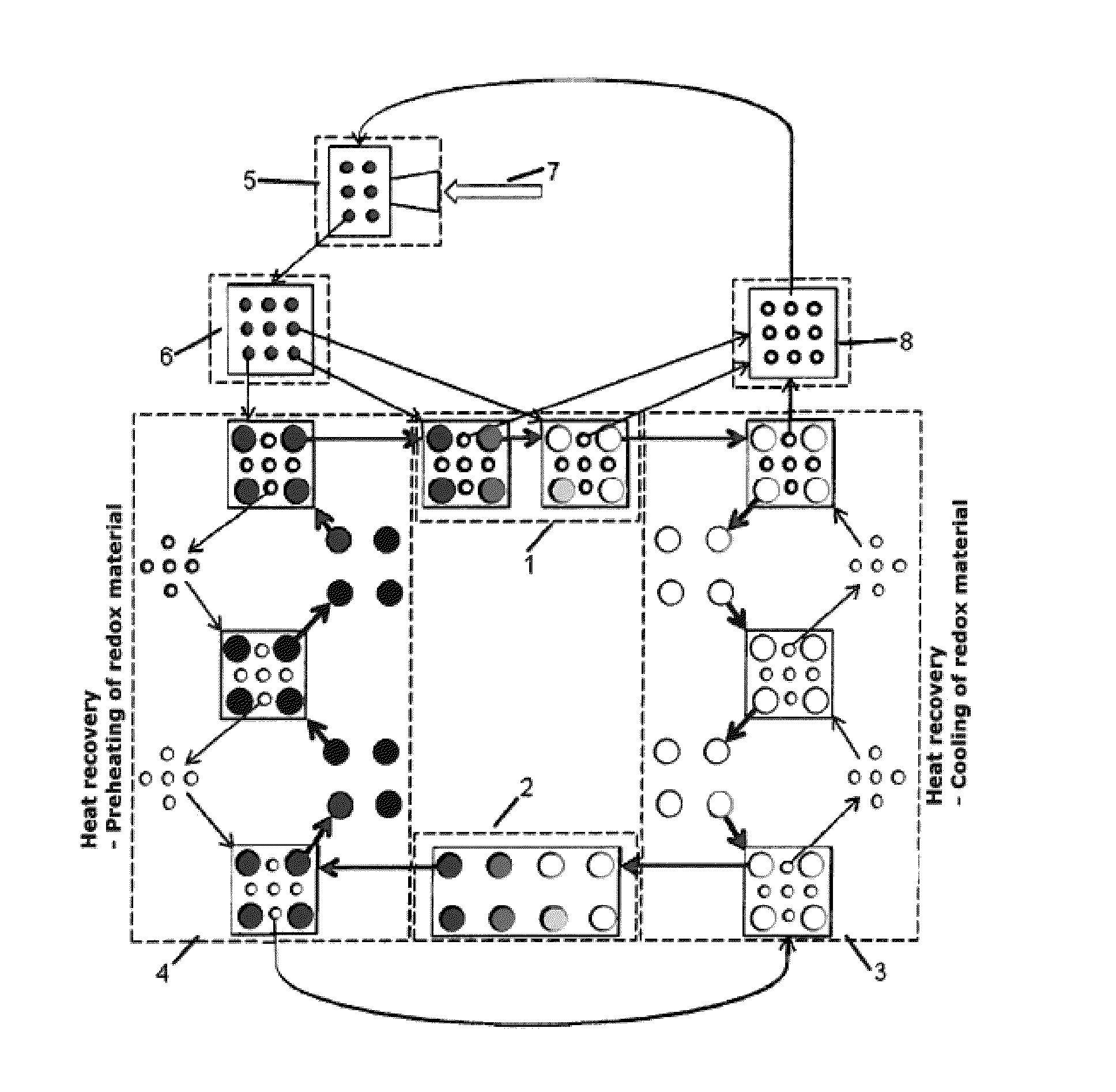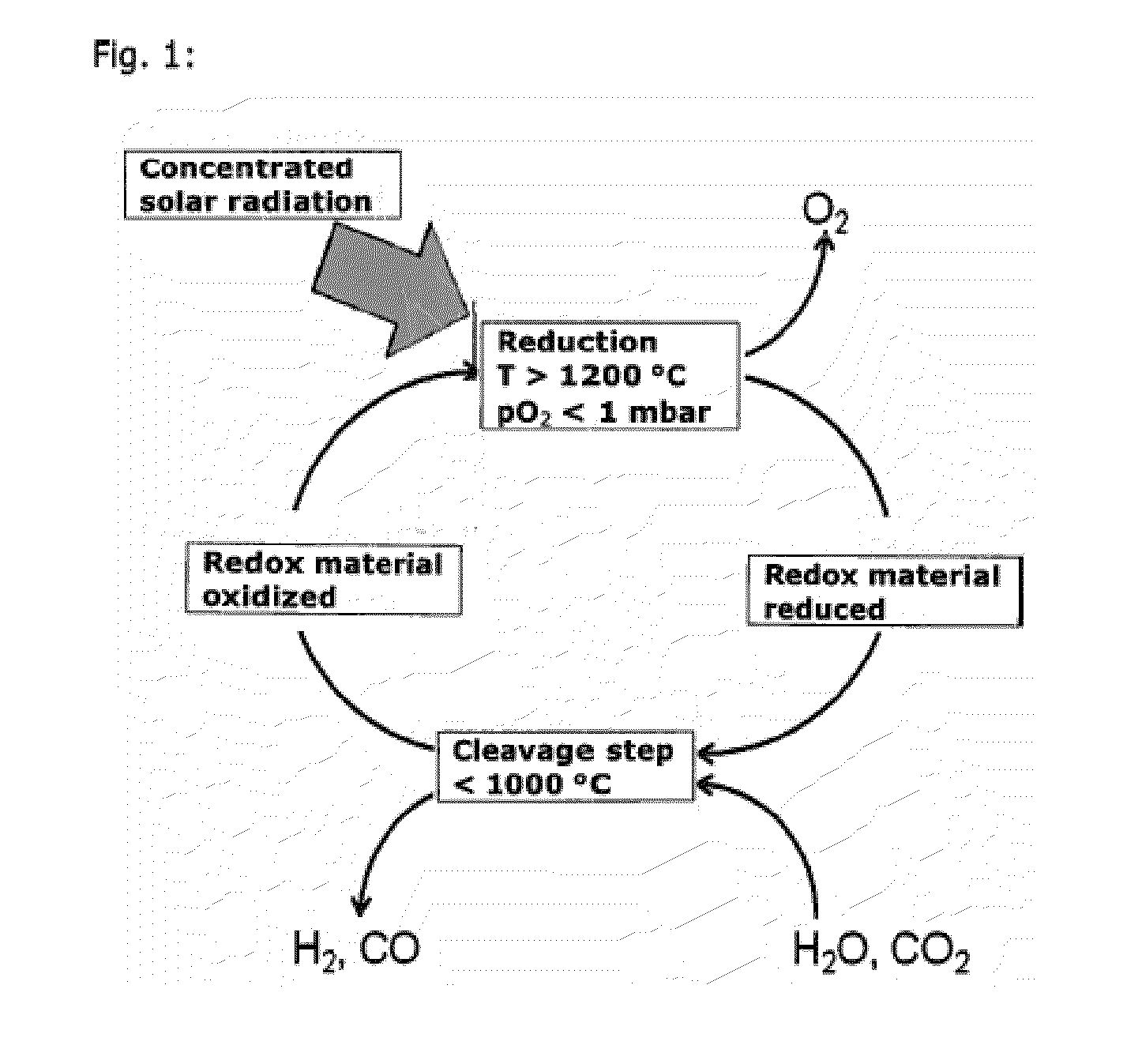Heat transfer particles for solar-driven thermochemical processes
a technology of solar energy and thermochemical processes, applied in the direction of lighting and heating apparatus, domestic cooling apparatus, greenhouse gas reduction, etc., can solve the problems of negative effect on efficiency, inability to integrate these receivers/reactors into an overall process, and reaction limitations of kinetics, heat and mass transpor
- Summary
- Abstract
- Description
- Claims
- Application Information
AI Technical Summary
Benefits of technology
Problems solved by technology
Method used
Image
Examples
example
[0087]Cerium oxide particles having an average size of 3 mm were employed as the solid reactant. An open cavity with a free falling particle film was used as the receiver. Ceramic particles with an average particle size of 0.5 mm made of alumina were employed as heat transfer media. The heat transfer medium heated up from 1300° C. to 1400° C. under concentrated solar radiation. The hot heat transfer media at 1400° C. were conveyed into a well insulated store.
[0088]From there, the hot heat transfer media were brought into contact with the cerium oxide to heat it and to reduce it. For this purpose, the particle types were mixed and left in contact until the designated amount of heat had been transferred, or until the necessary reduction had taken place. Subsequently, the particle types were separated by a sieve.
[0089]In addition, the principle consisting of mixing, heat transfer and separation was utilized for heat recovery. For this purpose, a quasi countercurrent heat exchanger was ...
PUM
 Login to View More
Login to View More Abstract
Description
Claims
Application Information
 Login to View More
Login to View More - R&D
- Intellectual Property
- Life Sciences
- Materials
- Tech Scout
- Unparalleled Data Quality
- Higher Quality Content
- 60% Fewer Hallucinations
Browse by: Latest US Patents, China's latest patents, Technical Efficacy Thesaurus, Application Domain, Technology Topic, Popular Technical Reports.
© 2025 PatSnap. All rights reserved.Legal|Privacy policy|Modern Slavery Act Transparency Statement|Sitemap|About US| Contact US: help@patsnap.com



